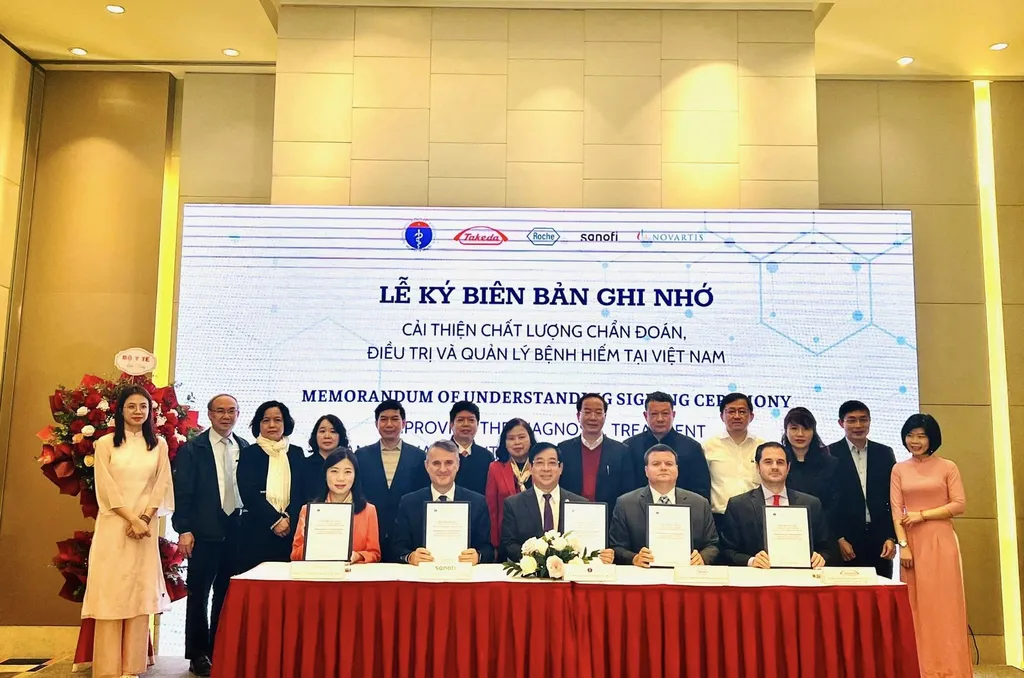 Society
Society

 |
| A child with a rare disease is examined at the National Children's Hospital. — Photo suckhoedoisong.vn |
HÀ NỘI — Việt Nam counts around six million people suffering from approximately 100 rare diseases, with 58 per cent of the patients being children.
Statistics also revealed that around 30 per cent of children with these types of illnesses die before the age of 5.
According to reports at the seminar “Strengthening the management of rare diseases in Vietnam” by the Ministry of Health (MoH) and Việt Nam Medical Association on Thursday, there are 300 million people affected by around 6,000 rare diseases around the world, and 80 per cent of these cases are caused by genetics.
Among them, fewer than 200,000 people have their medical conditions diagnosed.
Advanced medications are available for some rare genetic diseases. However, they have not been granted approval for use in Việt Nam, or are not covered by health insurance which leads to limited accessibility.
Highlighting that rare diseases are a challenge to healthcare not only in Việt Nam but the world at large, Deputy Minister of Health Dr Trần Văn Thuấn said that improving the management and treatment of rare diseases is an important mission to ensure equality in public health.
At the 7th APEC High-level Meeting on Health and the Economy, Việt Nam was part of an initiative that addresses barriers to the diagnosis and treatment of rare diseases in the region.
The MoH has implemented several policies and solutions on the matter, such as a rare disease support group and an advisory council on rare disease management, which were established in 2014 and 2016, respectively.
Support policies for rare disease treatment were also included in the 2016 Law on Pharmacy and related decrees.
Deputy health minister Thuấn emphasised that the question is whether the management policies on rare diseases in Việt Nam are adequate and effective in practice, whether preventive measures for the risks of rare disease infections are sufficient, and how patients of these illnesses can access treatment plans.
“These are the concerns of MoH leaders as well as policy makers and managers in public health care in the context that the country still faces many difficulties,” he added.
“Building a good policy requires a long-term vision and scientific evidence. At the same time, policy development and execution play a crucial role and need to be guaranteed with diverse resources, including international cooperation,” said Thuấn.
Addressing the event, President of Việt Nam Medical Association Dr Nguyễn Thị Xuyên, said technology advancements and the increasing capability of the healthcare sector have allowed for more rare diseases to be diagnosed, and new treatment plans to be enacted for patients suffering from the illness.
However, according to Xuyên, multiple challenges remain in rare disease management and patient accessibility to advanced treatment in Việt Nam and globally.
The public still has limited awareness of rare diseases and their risks, while medical care for these illnesses is expensive, even unaffordable in some cases where the patients do not have financial support or must undergo prolonged treatment, she added.
The Việt Nam Medical Association has been coordinating with its partners to organise programmes aiming to build capacity and enhance awareness of rare diseases, alongside extending medication support programmes worth hundreds of billions of đồng to patients, said Xuyên.
 |
| Delegates sign a memorandum of cooperation on rare disease management and treatment in Việt Nam on February 29. — VNS Photo Thanh Hải |
The event also witnessed a signing ceremony of a memorandum of cooperation on rare disease management and treatment in Việt Nam between the Việt Nam Medical Service Administration under the Ministry of Health and four multinational pharmaceutical companies, including Takeda, Sanofi, Roche and Novartis.
The cooperation will focus activities on improving the quality of diagnosis, treatment and management of rare diseases, including establishing a group of experts to monitor the application of guidelines at hospitals and reviewing and updating the Ministry of Health's standard management guidelines.
It will aim to develop models that assess disease costs, socio-economic burdens, rare drug treatment policies and propose policies to improve management and access to effective treatment.
It will also help develop a national screening programme for congenital and rare diseases; raise the community’s awareness of rare diseases through media campaigns, support the development of a national database on rare disease medicine as well as strengthen international cooperation. — VNS




